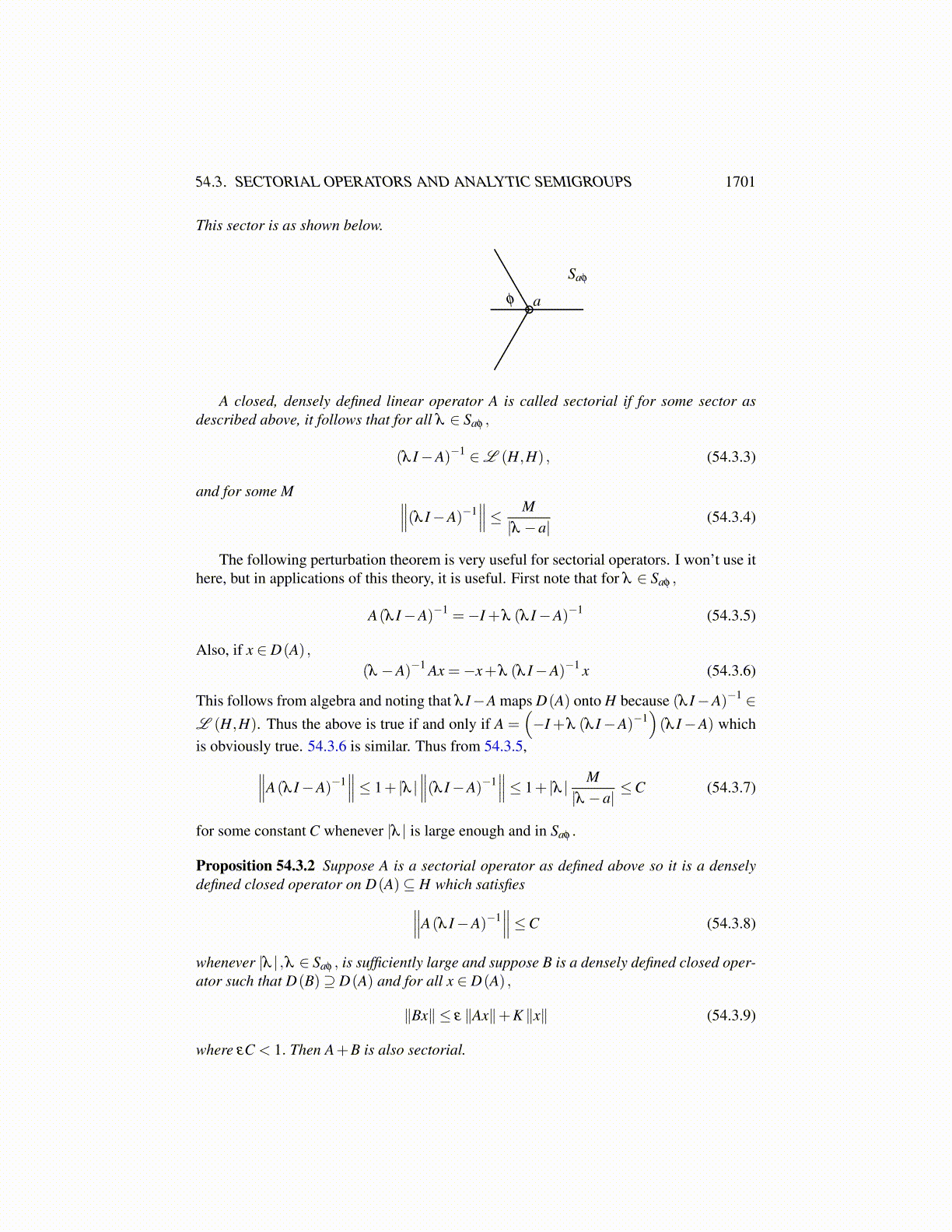
54.2. ANALYTIC SEMIGROUPS 1701
Lemma 54.1.6 If |λ |> ρ (A) , then the Neumann series,
1λ
∞
∑k=0
(Aλ
)k
converges.
Proof: This follows directly from Theorem 53.2.6 on Page 1684 and the observationabove that 1
λ∑
∞k=0( A
λ
)k= (λ I−A)−1 for all |λ | > ||A||. Thus the analytic function, λ →
(λ I−A)−1 has a Laurent expansion on |λ |> ρ (A) by Theorem 53.2.6 and it must coincidewith 1
λ∑
∞k=0( A
λ
)kon |λ | > ||A|| so the Laurent expansion of λ → (λ I−A)−1 must equal
1λ
∑∞k=0( A
λ
)kon |λ |> ρ (A) . This proves the lemma.
The theorem on the spectral radius follows. It is due to Gelfand.
Theorem 54.1.7 ρ (A) = limn→∞ ||An||1/n.
Proof: If|λ |< lim sup
n→∞
||An||1/n
then by the root test, the Neumann series does not converge and so by Lemma 54.1.6|λ | ≤ ρ (A) . Thus
ρ (A)≥ lim supn→∞
||An||1/n .
Now let p be a positive integer. Then λ ∈ σ (A) implies λp ∈ σ (Ap) because
λpI−Ap = (λ I−A)
(λ
p−1 +λp−2A+ · · ·+Ap−1
)=
(λ
p−1 +λp−2A+ · · ·+Ap−1
)(λ I−A)
It follows from Lemma 54.1.2 applied to Apthat for λ ∈ σ (A) , |λ p| ≤ ||Ap|| and so |λ | ≤||Ap||1/p . Therefore, ρ (A)≤ ||Ap||1/p and since p is arbitrary,
lim infp→∞||Ap||1/p ≥ ρ (A)≥ lim sup
n→∞
||An||1/n .
This proves the theorem.
54.2 Analytic Semigroups54.3 Sectorial Operators and Analytic Semigroups
In solving ordinary differential equations, the main result involves the fundamental matrixΦ(t) where Φ′ (t) = AΦ(t) ,Φ(0) = I, or Φ′ (t)+AΦ(t) = 0,Φ(0) = I and the variation ofconstants formula. Recall that Φ(t + s) = Φ(t)Φ(s). This idea generalizes to the situationwhere A is a closed densely defined operator defined on D(A)⊆ X , a Banach space undersome conditions which are sufficiently general to include what was done above with A an